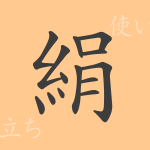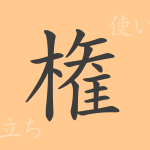In the rich expressive world of the Japanese language, there are many kanji characters, each with its unique history and meaning. Among them, the kanji “遣(けん, ken)” is frequently used in daily life, yet its deep meanings and origins are not widely known. This article focuses on the kanji “遣(けん, ken),” exploring its origins, meanings, usage, and related idioms and proverbs to uncover its charm in depth.
Origins of 遣(けん, ken)
The kanji “遣(けん, ken)” has been used in China since ancient times, originally deriving from a pictograph meaning “to send something by hand.” This character developed to represent acts of transporting goods or dispatching people, essentially encompassing the general action of “sending.” Over time, it was introduced to Japan, where its meanings expanded within the unique context of Japanese culture and language, leading to its current usage.
Meanings and Usage of 遣(けん, ken)
The kanji “遣(けん, ken)” carries meanings such as “to send,” “to dispatch,” and “to use.” It is used in contexts where objects are moved to another place or people are sent to another location for a specific purpose. Metaphorically, it can also express the act of directing feelings or emotions. Specific usages include phrases like “使者を遣る(ししゃをやる, shisha o yaru)” (to send a messenger), “心を遣る(こころをやる, kokoro o yaru)” (to be considerate), and “手を遣う(てをやく, te o yaku)” (to take trouble). This kanji is versatile and used in various contexts.
Readings, Stroke Count, and Radical of 遣(けん, ken)
The kanji “遣(けん, ken)” has several readings in Japanese.
- Readings: On’yomi (音読み): “ケン(けん, ken)”; Kun’yomi (訓読み): “つか.う(つかう, tsukau),” “つか.わす(つかわす, tsukawasu),” “や.る(やる, yaru),” “おく.る(おくる, okuru)”
- Stroke count: The kanji “遣(けん, ken)” consists of 13 strokes.
- Radical: The radical for this kanji is “辵(しんにょう, shinnyou),” which denotes the act of moving or walking.
Idioms, Proverbs, and Phrases Using 遣(けん, ken)
There are numerous idioms, proverbs, and phrases that include the kanji “遣(けん, ken).” For instance, “遣り通す(やりとおす, yaritoosu)” means to see something through to the end, while “心を遣る(こころをやる, kokoro o yaru)” means to be considerate of others’ feelings. “手を遣る(てをやく, te o yaku)” signifies taking trouble, and “遣り繰り(やりくり, yarikuri)” refers to managing or making ends meet. These expressions convey the rich nuances of the Japanese language.
Conclusion About 遣(けん, ken)
The kanji “遣(けん, ken)” is a character with broad applications and rich expressive power related to emotions and actions. Its usage in Japanese goes beyond merely “sending” objects, also encompassing expressions deeply connected to human feelings and actions. Understanding such multifaceted kanji allows for a deeper appreciation of the Japanese language and enables richer communication.

























